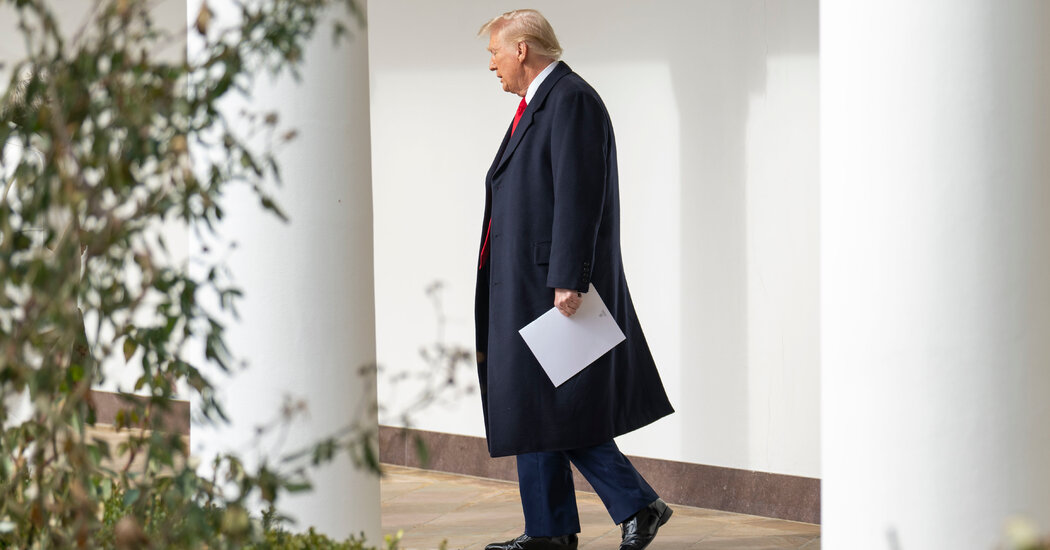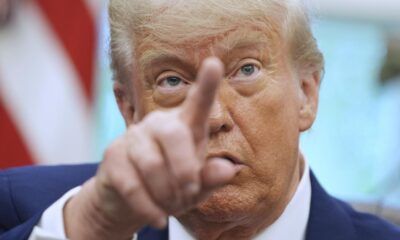Breaking News
Trump Is Said to Push for Early Reopening of North American Trade Deal

The Trump administration is planning to initiate negotiations to revise the U.S. trade agreement with Canada and Mexico before the required 2026 review, with a focus on protecting U.S. auto jobs and countering Chinese companies expanding into the Mexican auto industry, sources familiar with the discussions revealed.
The U.S.-Mexico-Canada Agreement, signed by Mr. Trump in 2020, mandates a “joint review” of the deal after six years, scheduled for July 1, 2026. However, Trump aims to start these talks earlier, as per the sources who preferred to remain anonymous.
Officials from the Trump administration are particularly interested in strengthening the agreement’s regulations concerning the auto sector to prevent auto plants from relocating outside the U.S. They also seek to prevent Chinese companies from exporting cars and auto parts to the U.S. through facilities in Mexico.
Additionally, Mr. Trump has threatened to impose a 25 percent tariff on products from Canada and Mexico, citing concerns about drugs and migrants crossing the U.S. borders. He announced his intention to proceed with the tariffs on Feb. 1 during a statement from the Oval Office on the evening of his inauguration.
Members of the Trump administration believe that Mexico has violated a separate agreement limiting metal exports to the U.S. and are eager to demonstrate their intent to address such trade infractions, according to a source familiar with the discussions.
The Wall Street Journal previously reported on Mr. Trump’s push for an early renegotiation of the North American trade deal. While the three countries are required to convene for discussions on the deal six years after its implementation, experts anticipated the Trump team to expedite this process.
Originally, Mexico and Canada had insisted on a six-year interval before revisiting the deal’s terms, hoping to navigate through a potential second Trump administration. However, the requirement for talks in 2026 will now fall within Mr. Trump’s term.
Trump and his advisors have criticized the previous trade agreement, NAFTA, and negotiated a new deal to replace it. One significant change in the new pact was increasing the content threshold for vehicles produced in North America to qualify for zero tariffs. The agreement also included provisions mandating the use of more North American metal and higher-paid workers by automakers.
Despite these changes, Trump’s team believes they have not been effective enough in preventing car manufacturers from moving production outside the U.S. They are also concerned about a rise in Mexican imports of inexpensive Chinese vehicles and Chinese efforts to establish auto plants in Mexico.
During a speech at the Detroit Economic Club in October, Mr. Trump stated, “Mexico is becoming the second China.”
He further added, “When China comes in, they take over everything, and you’d have no car manufacturing anymore.”
While these plans are subject to change, it remains to be seen whether Trump’s tariff threats against Canada and Mexico are part of a negotiation strategy to secure concessions or will be implemented outright. The Trump administration’s press office did not respond immediately to a request for comment.
On Monday evening, Trump signed an executive order instructing various agencies to study multiple trade issues. Although no new tariffs were imposed immediately, as previously threatened, the order sets the stage for potential trade actions in the future.
One provision in the order tasks trade officials with evaluating the impact of the North American trade deal on workers, farmers, and businesses, and making recommendations regarding the U.S.’s participation in the agreement. It also instructs officials to start seeking public input in preparation for the 2026 review of the trade deal.
-

 Destination8 months ago
Destination8 months agoSingapore Airlines CEO set to join board of Air India, BA News, BA
-

 Breaking News10 months ago
Breaking News10 months agoCroatia to reintroduce compulsory military draft as regional tensions soar
-

 Tech News12 months ago
Tech News12 months agoBangladeshi police agents accused of selling citizens’ personal information on Telegram
-

 Gadgets3 months ago
Gadgets3 months agoSupernatural Season 16 Revival News, Cast, Plot and Release Date
-

 Productivity11 months ago
Productivity11 months agoHow Your Contact Center Can Become A Customer Engagement Center
-

 Gadgets3 weeks ago
Gadgets3 weeks agoFallout Season 2 Potential Release Date, Cast, Plot and News
-

 Breaking News10 months ago
Breaking News10 months agoBangladesh crisis: Refaat Ahmed sworn in as Bangladesh’s new chief justice
-

 Toys12 months ago
Toys12 months ago15 of the Best Trike & Tricycles Mums Recommend























